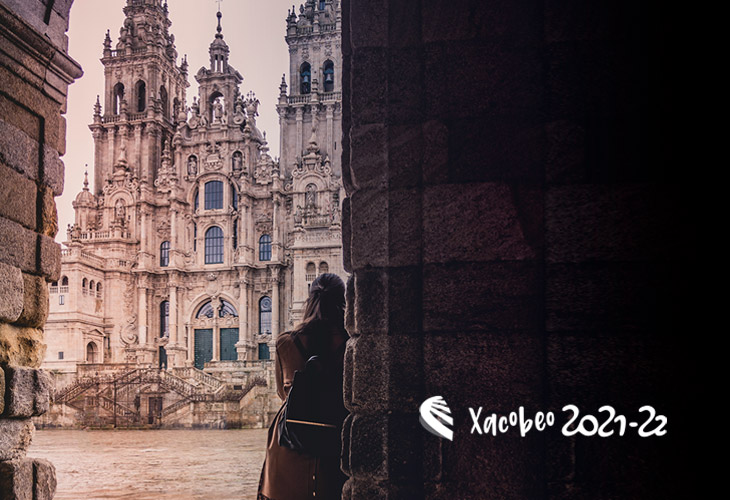
In 2022, the city of Santiago de Compostela is receiving a much larger number of pilgrims than in other years.
In addition to the fact that walking the Camino de Santiago has become an increasingly popular and well-known experience almost everywhere in the world, there are reasons why this year is more special than others.
Today we want to give you reasons why this year you should also join the Camino de Santiago adventure.
Table of Contents
What is the Año Xacobeo?
While you may not have heard of the term Año Xacobeo, you may be more familiar with the term Año Santo (Holy Year). Or perhaps you have also heard of the Jubilee or Año Jacobeo, in its Spanish version.
What all these terms have in common is that they talk about a very special year in which a coincidence in the calendar has to occur: that July 25, the day of St. James the Apostle, falls on a Sunday.
This phenomenon does not take place every 7 years, as we can imagine, since leap years have to be taken into account. In fact, we only have a total of 14 Jacobean Years per century.
Due to its infrequency, the Holy Year of St. James is a highly anticipated event for pilgrims and believers as well as for the city of Santiago de Compostela in general. The reasons? We explain them below.
What happens in the Xacobean Year?
The main reason why the Xacobean Year is so important for thousands of people is because in this year the Church can grant the plenary indulgence or what is the same: the forgiveness of all sins. That is why so many pilgrims from all over the world come to Santiago de Compostela in these particular years.
But in order to obtain the forgiveness of their sins, those believers who wish to receive the plenary indulgence must fulfill a series of requirements. Thus, although it is no longer indispensable to have made a pilgrimage to Santiago de Compostela, it will be necessary to visit the tomb of the Apostle in the cathedral, make confession and receive Holy Communion, in addition to saying a prayer for the Pope’s intentions.
In the Xacobean Year, the opening of the Holy Door, located at the back of the cathedral, also takes place at last.
This door, which is always closed, is opened on December 31, on the eve of the beginning of the Holy Year, through a solemn ceremony in which the main religious authorities participate and in which this door is struck 3 times with a silver hammer, to leave it open to pilgrims and visitors for the next 12 months.
Why is this Xacobeo lasting for two years?
As we said, for the Xacobean or Holy Year to be considered as such, July 25 must fall on a Sunday, as happened in this past 2021. And this is impossible to happen two years in a row.
However, this time the Holy Year will be celebrated for two consecutive years, including this 2022 even if July 25 falls on a Monday. This is exceptional due to the restrictions caused by the Coronavirus pandemic, which prevented many pilgrims in 2021 from traveling to Santiago de Compostela and visiting the cathedral.
And although it may seem that this is the first and only time that this exception is given, it is actually the second. The previous one was in 1937 and was extended to include 1938 due to the Spanish Civil War, after the concession of Pope Pius XI.
When will the next Xacobean Year be?
The previous Holy Year took place 11 years earlier, in 2010, and will not happen again until 2027. Hence the need to extend the Xacobean Year in this 2021-2022: to give pilgrims and believers the opportunity to redeem their sins without having to wait again until 2027.
This is therefore a great time to make a pilgrimage to Santiago de Compostela, whether you are a believer or not, since in addition to the plenary indulgence, the city is full of events and celebrations and the atmosphere is unique. In fact, attendance records have already been broken this year and it is expected that many more pilgrims will continue to arrive in the Galician capital.
If you also want to be one of them, count on our help to live this experience with all the comforts. Just contact us and we will advise you to live the Camino de Santiago in your own way.

